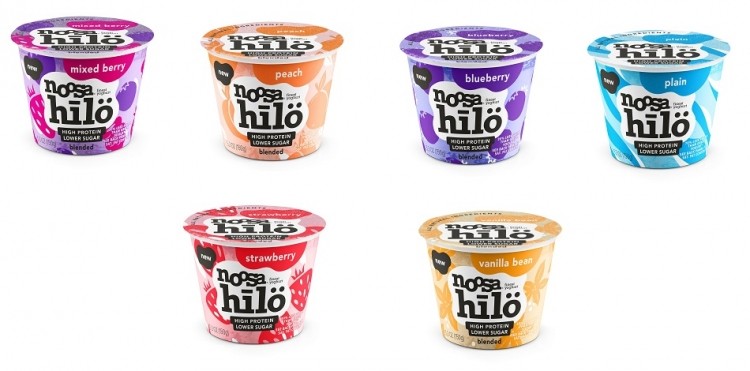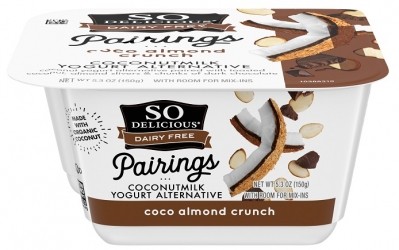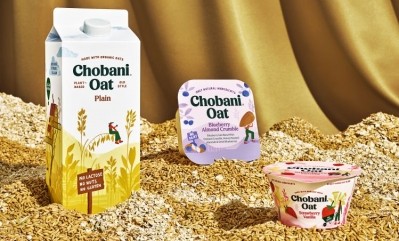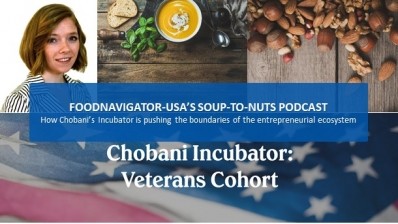noosa launches hilo yogurt to appeal to more health-aware consumers monitoring their protein and sugar intake

"When we bought the company, we noticed that it has really just focused on one segment of the occasion within yogurt," Priscilla Tuan, senior vice president of marketing at Sovos Brands (parent company to noosa yoghurt), told FoodNavigator-USA.
Tuan added Sovos has been working to expand the convenience of noosa's yogurt portfolio by launching individual 'little tubs' for on-the-go snacking and more blended (as opposed to its signature fruit on the bottom yogurt) flavor options, a growing consumer preference in yogurt, according to the company's consumer research.
"[hilo yogurt] was the logical next progression," Tuan said.
While there are plenty of other high-protein, refrigerated dairy products that cater to fitness, performance-focused athletic consumers, Tuan explained that noosa HiLo yogurts (available in six blended flavors) are targeting the more moderate "health-aware" consumer looking for balanced options that taste like noosa's original products.
Sovos conducted product taste testing where participants tasted four different yogurts: noosa hilo, two leading Icelandic skyr brands, and a leading Greek yogurt brand.
"noosa hilo won 66 to 34 in a 4-way test," said Tuan (66% of those surveyed preferred noosa to the other three brands).
According to Tuan, noosa's attention to ingredients is what gives the yogurt its distinctive 'wow' taste. The brand uses RBST-free milk sourced from within a 40-mile radius of its production facility and uses premium ingredients such as wild blueberries and wildflower North American honey.
"We feel like that makes a difference in what people actually taste," she said.
noosa experimented with different levels of protein, using a proprietary straining process, going as high as 15g per serving but ultimately settled on 12g of protein per 5.3-ounce cup.
"When you get to higher levels of protein, there starts to be a trade off in flavor," Tuan said.
Retailers still seek 'breakout' innovation in yogurt
When Sovos Brands acquired noosa in November 2018 the yogurt category was registering low to no growth. US retail sales of yogurt fell -3.4% in the 52 weeks to January 26, 2019 (according to Nielsen data for all outlets and c-stores)
"When we bought this company, the category had started to flatten out after a tremendous period of growth driven by innovation, entrants, and in part premiumization of the category," Tuan said. "I think retailers are looking for breakout innovation [in yogurt]."
While growth may not be quite as robust as it once was, there are some bright spots within the category, according to Tuan, who shared that noosa is outperforming its competitors from a unit growth standpoint, increasing 2.2% for the past 12 weeks compared to a 1.3% increase in the last 52 weeks.
Yogurt and snacking
According to Tuan, retailers still recognize the role yogurt plays in the growing refrigerated snacking trend despite the category's lackluster growth in recent years.
Mintel research found that while the $40bn conventional snacking market declined 2% annually (between 2014-2017), the $17bn health and wellness snacking category rose, bolstered by an 8% increase in fresh snacking products, which include refrigerated protein bars, drinkable soups, bottled smoothies, and yogurt.
Millennial and Gen Z consumers also said that 'fresh' is the top factor in their snacking purchases and protein is a highly-sought attribute within fresh snacking -- 54% of US consumers believe they need more protein in their diet, according to Mintel.
While noosa is known for its distinctive thick, creamy, and not-overly tart flavor profile, consumption of the brand's products spans all day parts, said Tuan.
"The snacking occasion for yogurt is big, and noosa isn’t actually different than the rest of the category. People are eating it for breakfast, people are eating it for a mid-morning snack, with lunch, as an afternoon snack, and then after dinner."
noosa hilo yogurt is launching in major retailers across the US including Albertsons, Walmart, Hy-Vee, and Safeway, with new retailers across all channels coming on board every day, according to Tuan.
















